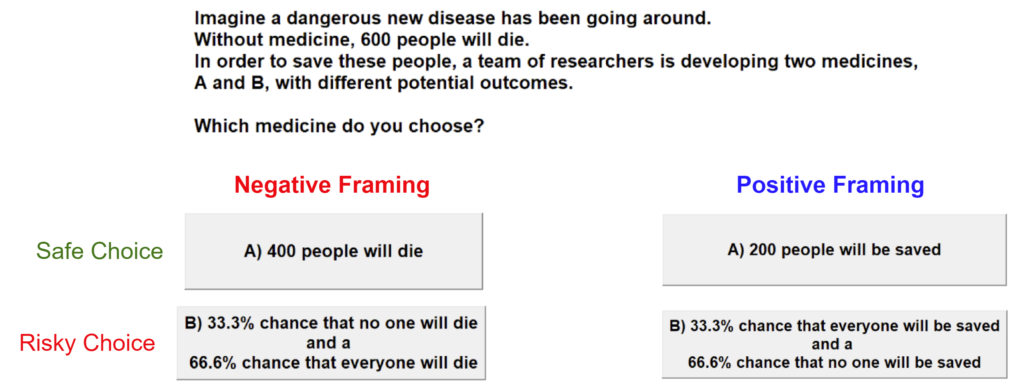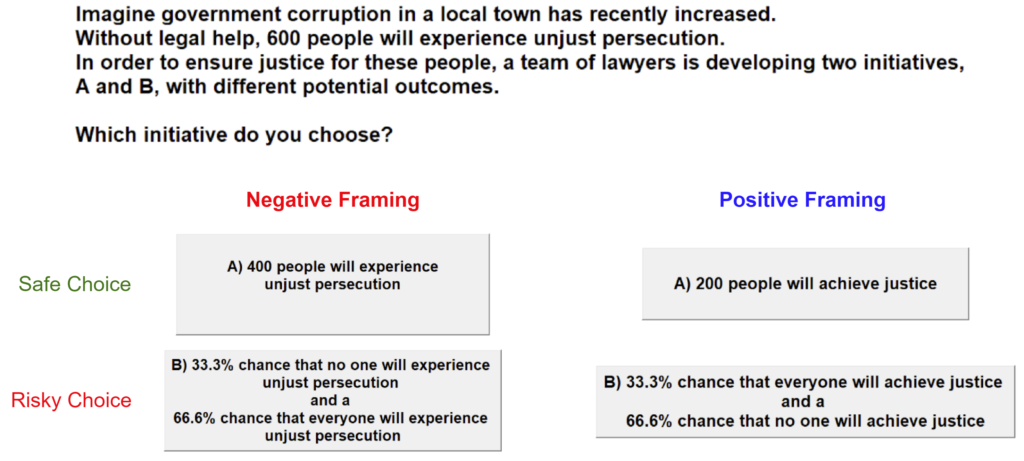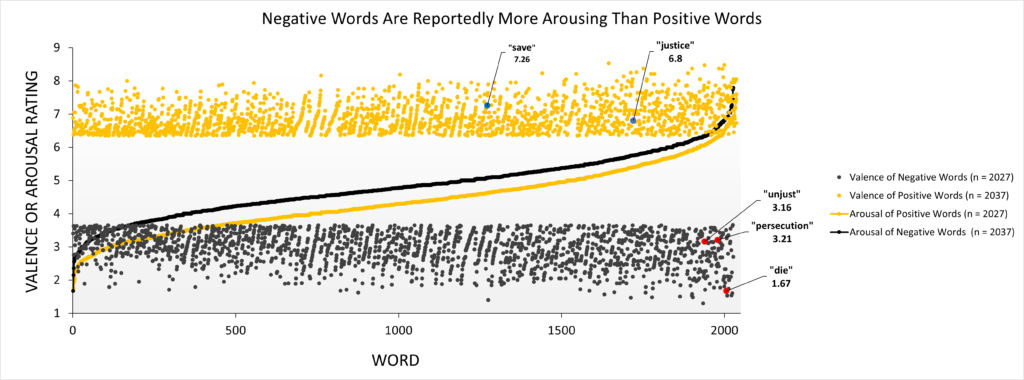Live Poster Session: Zoom Link
Abstract: In the framing effect, decision-makers favor risky options when outcomes are framed as negative losses and are risk-averse when outcomes are framed as positive gains (Kahaneman & Tversky, 1979). In the present study, Khaneman and Tverksy’s (1981) classic disease framing task and a novel unjust persecution framing task developed using lexical emotional valence data (Warriner, Kuperman, & Brysbaert, 2013) from the English Lexicon Project database (Balota et al., 2007) were used to test for framing effects during the first choice trial, the first instance of 3 identical and consecutive choices in under 10 seconds, and the final instance of 3 identical and consecutive choices in under 10 seconds during a randomly assigned framing task. Results found a significant overall framing effect between positive and negative frame groups with higher risky choice frequency in negative frames compared to positive frames irrespective of context, though the effect did not reach significance during any individual task phase of the classic disease context. A significant framing effect was detected in the novel unjust persecution context during the first choice trial and was eliminated following further choice trials and knowledge probe questions. Moreover, in line with previous work on the effects of happy mood induction on risky choice frequency (Stanton et al., 2014), positive frames, but not negative frames, increased risky choice frequency in the final phase of the task compared to the first choice trial. Results also found that self-reported measures of healthy emotionality obtained prior to the framing task were correlated with risky choices. I propose that the two framing tasks used in this study are social in nature in that their potential reward outcomes involve other people. In addition, citing the significant associations between healthy self-reported emotionality ratings and risky choices found here alongside studies that have found reduced framing effects in bilingual individuals when reading in their non-native tongue due to increased emotional detachment, as well as in individuals with autism due to decreased tendency to incorporate emotional information into decision-making processes, I propose that risky choices in social framing paradigms are better indicators of healthy emotionality than of irrational decision-making.
MA-Thesis-Poster




